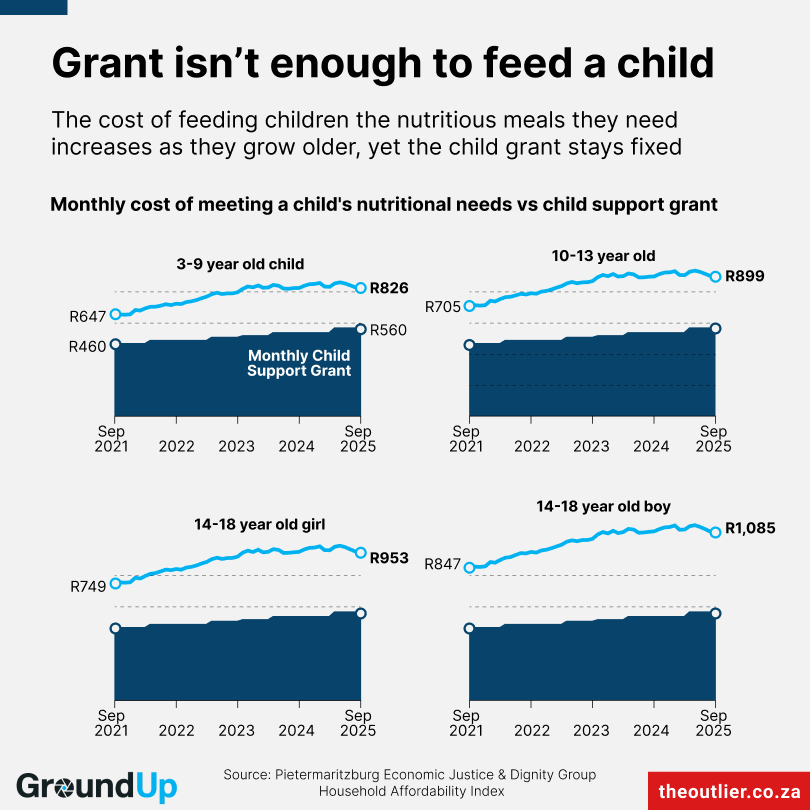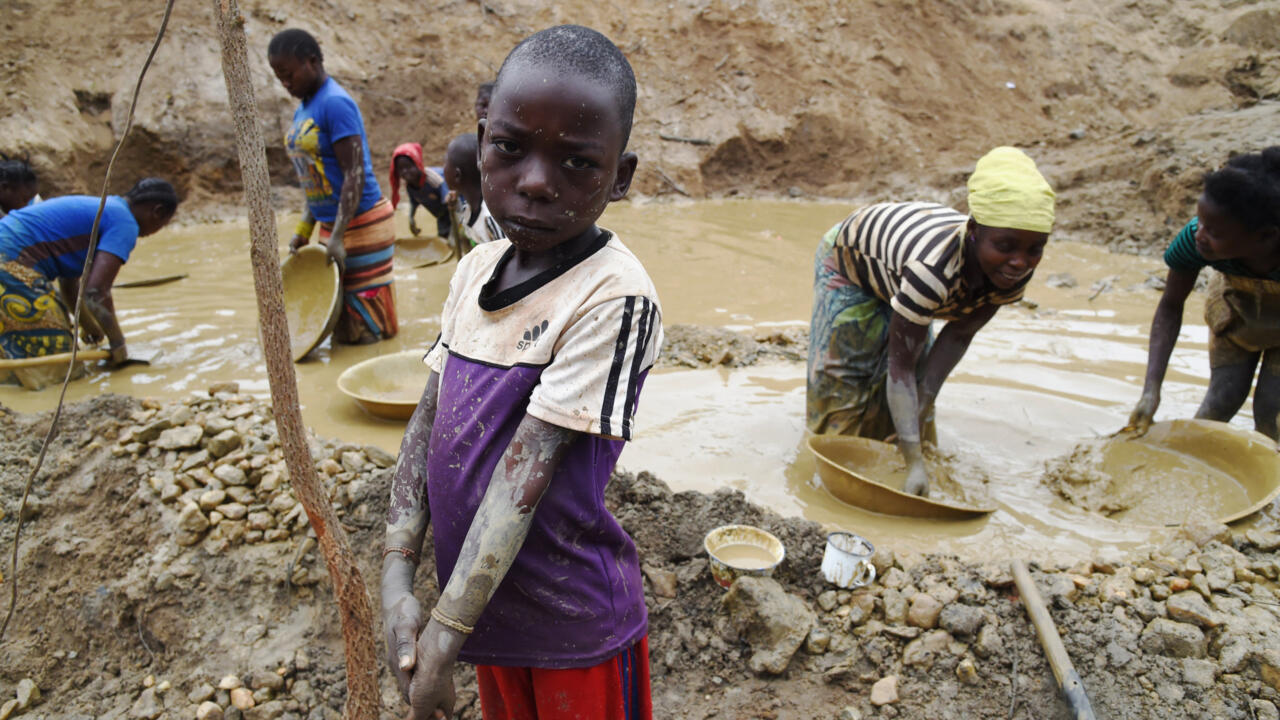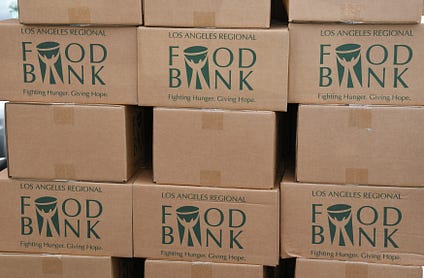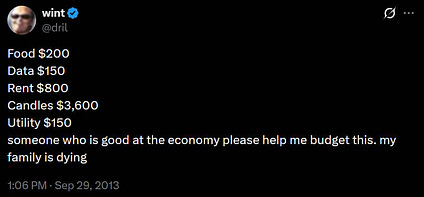Child Support Grant cannot feed a child – GroundUp

Report on Child Support Grant Efficacy in South Africa and Alignment with Sustainable Development Goals
1. Introduction: Assessing Social Protection against Development Goals
This report analyzes the disparity between South Africa’s Child Support Grant (CSG) and the actual cost of meeting a child’s basic nutritional needs. The findings are evaluated in the context of the nation’s commitment to key Sustainable Development Goals (SDGs), particularly those concerning poverty, hunger, and health.
2. Financial Disparity and SDG 1 (No Poverty)
A significant financial gap exists, undermining the objective of SDG 1, which aims to end poverty in all its forms. The CSG, a primary social protection instrument, falls short of providing a pathway out of poverty for its recipients.
- Cost of Child Nutrition: The Pietermaritzburg Economic Justice and Dignity Group (PEJDG) estimates the monthly cost to be between R826 and R1,085.
- Child Support Grant Value: The grant is currently valued at R560 per month.
- Food Poverty Line: The official food poverty line is R796 per person per month, which is R236 higher than the grant provided to over 13 million children.
This discrepancy directly challenges the progress towards SDG Target 1.3: Implement nationally appropriate social protection systems and measures for all, including floors, and by 2030 achieve substantial coverage of the poor and the vulnerable.
3. Impact on Child Nutrition and SDG 2 (Zero Hunger)
The inadequacy of the grant is a direct contributor to widespread food insecurity and malnutrition, creating a significant barrier to achieving SDG 2 (Zero Hunger).
- Household Food Insecurity: Over 60% of households in South Africa are affected by food insecurity.
- Child Malnutrition: Approximately 25% of children in the country are stunted as a result of chronic malnutrition.
These statistics indicate a failure to meet SDG Target 2.1 (end hunger and ensure access by all people to safe, nutritious and sufficient food) and SDG Target 2.2 (end all forms of malnutrition, including achieving targets on stunting and wasting in children under 5 years of age).
4. Health Outcomes and SDG 3 (Good Health and Well-being)
The nutritional deficit has severe consequences for child health and survival, directly impacting the goals outlined in SDG 3 (Good Health and Well-being).
- Child Mortality: Parliamentary data from 2023 revealed that approximately 1,450 children under the age of five died from severe acute malnutrition.
This outcome is in direct opposition to SDG Target 3.2: End preventable deaths of newborns and children under 5 years of age.
5. Policy Recommendations and Outlook
A 2023 report commissioned by the National Department of Social Development acknowledged the grant’s insufficiency and proposed increases to align with poverty reduction goals.
Recommended Grant Adjustments:
- To Halve Child Poverty: An increase to R945 per month.
- To Eliminate Child Poverty: An increase to R1,417 per month.
While food prices have remained relatively stable and the grant saw a minor increase of R30, these factors are insufficient to close the substantial gap between the social grant and the cost of living required to uphold the principles of the Sustainable Development Goals.
Analysis of SDGs in the Article
1. Which SDGs are addressed or connected to the issues highlighted in the article?
-
SDG 1: No Poverty
- The article directly addresses poverty by discussing the Child Support Grant, a social protection measure aimed at alleviating poverty among children. It highlights the inadequacy of this grant compared to the “official food poverty line” of R796 and the cost of living, and mentions recommendations to increase the grant to “halve child poverty.”
-
SDG 2: Zero Hunger
- This is a central theme of the article. It explicitly mentions “Child hunger is a growing issue,” “food insecurity affects over 60% of households,” and that “about a quarter of children in South Africa are stunted due to malnutrition.” The entire discussion revolves around the inability of the grant to meet a child’s basic nutritional needs.
-
SDG 3: Good Health and Well-being
- The article connects malnutrition directly to child mortality, a key health outcome. It states that a parliamentary question revealed “about 1,450 children under the age of five died of acute malnutrition in 2023,” linking the lack of adequate nutrition to severe health consequences.
-
SDG 10: Reduced Inequalities
- The article highlights the economic inequality faced by vulnerable children and their caregivers. The significant gap between the social support provided (Child Support Grant at R560) and the actual cost of nutritional needs (R826 – R1,085) demonstrates the failure of a key social protection policy to adequately address the needs of the poorest, thereby perpetuating inequality.
2. What specific targets under those SDGs can be identified based on the article’s content?
-
SDG 1: No Poverty
- Target 1.2: “By 2030, reduce at least by half the proportion of men, women and children of all ages living in poverty in all its dimensions according to national definitions.” The article’s reference to a recommendation to increase the grant to “halve child poverty” directly aligns with this target.
- Target 1.3: “Implement nationally appropriate social protection systems and measures for all…” The Child Support Grant, which the article states is received by “more than 13-million children,” is a clear example of such a social protection system.
-
SDG 2: Zero Hunger
- Target 2.1: “By 2030, end hunger and ensure access by all people, in particular the poor and people in vulnerable situations, including infants, to safe, nutritious and sufficient food all year round.” The article’s focus on the high cost of meeting nutritional needs and widespread food insecurity directly relates to this target of ensuring access to sufficient food.
- Target 2.2: “By 2030, end all forms of malnutrition…” The specific mention that “about a quarter of children in South Africa are stunted due to malnutrition” directly addresses the goal of ending malnutrition and stunting.
-
SDG 3: Good Health and Well-being
- Target 3.2: “By 2030, end preventable deaths of newborns and children under 5 years of age…” The statistic that “1,450 children under the age of five died of acute malnutrition” points to a failure in achieving this target, as these deaths are preventable.
-
SDG 10: Reduced Inequalities
- Target 10.4: “Adopt policies, especially fiscal, wage and social protection policies, and progressively achieve greater equality.” The article’s critical analysis of the Child Support Grant’s value versus the cost of living is an evaluation of a social protection policy’s effectiveness in achieving equality.
3. Are there any indicators mentioned or implied in the article that can be used to measure progress towards the identified targets?
-
Indicators for SDG 1
- Indicator 1.2.1 (Proportion of population living below the national poverty line): The article provides a specific monetary value for the “official food poverty line” at “R796 per person per month,” which is a direct measure used for this indicator.
- Indicator 1.3.1 (Proportion of population covered by social protection floors/systems): The article states that “More than 13-million children receive this grant,” providing a clear number for the coverage of this specific social protection program.
-
Indicators for SDG 2
- Indicator 2.1.2 (Prevalence of moderate or severe food insecurity in the population): The article explicitly states that “food insecurity affects over 60% of households in the country,” which serves as a direct measure for this indicator.
- Indicator 2.2.1 (Prevalence of stunting among children under 5 years of age): The article provides a precise statistic for this indicator, noting that “about a quarter of children in South Africa are stunted due to malnutrition.”
-
Indicators for SDG 3
- Indicator 3.2.1 (Under-5 mortality rate): While not providing a rate, the article gives a raw number that contributes to this indicator: “about 1,450 children under the age of five died of acute malnutrition in 2023.” This figure is a direct measure of the problem that the under-5 mortality rate tracks.
4. Summary Table of SDGs, Targets, and Indicators
| SDGs | Targets | Indicators |
|---|---|---|
| SDG 1: No Poverty | 1.2: Reduce at least by half the proportion of people living in poverty.
1.3: Implement nationally appropriate social protection systems. |
1.2.1: The “official food poverty line is R796 per person per month.”
1.3.1: “More than 13-million children receive” the Child Support Grant. |
| SDG 2: Zero Hunger | 2.1: End hunger and ensure access to safe, nutritious and sufficient food.
2.2: End all forms of malnutrition, including stunting. |
2.1.2: “food insecurity affects over 60% of households in the country.”
2.2.1: “about a quarter of children in South Africa are stunted due to malnutrition.” |
| SDG 3: Good Health and Well-being | 3.2: End preventable deaths of children under 5 years of age. | 3.2.1: “about 1,450 children under the age of five died of acute malnutrition in 2023.” |
| SDG 10: Reduced Inequalities | 10.4: Adopt policies, especially social protection policies, to achieve greater equality. | The disparity between the Child Support Grant (R560) and the cost of nutritional needs (R826-R1,085) serves as an implicit indicator of the policy’s inadequacy. |
Source: groundup.org.za
What is Your Reaction?
 Like
0
Like
0
 Dislike
0
Dislike
0
 Love
0
Love
0
 Funny
0
Funny
0
 Angry
0
Angry
0
 Sad
0
Sad
0
 Wow
0
Wow
0















































/environment-climate-change-and-health-(ech)/water-sanitation-hygiene-and-health-(wsh)/landfill-tuvalu-36092.tmb-1200v.jpg?sfvrsn=5c21fe40_1#)


.jpg.webp?itok=0ZsAnae9#)

























